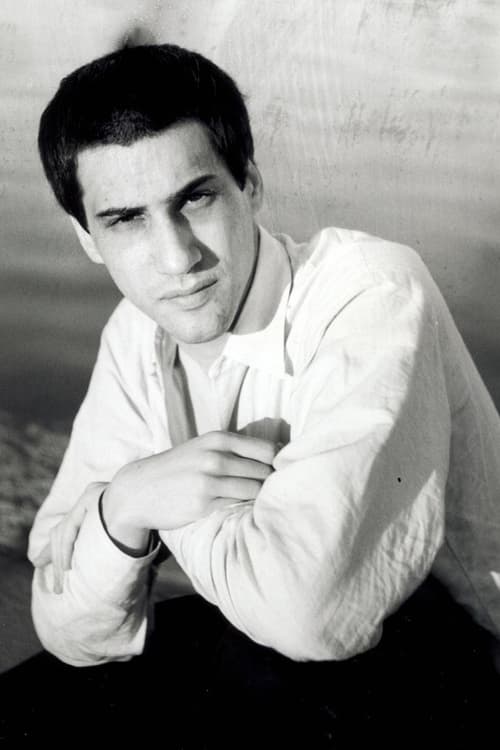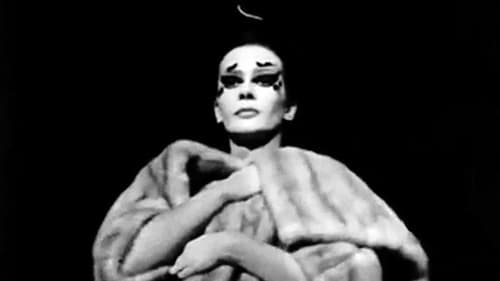
Arthur Lipsett
Nacimiento : 1936-05-13, Montreal, Quebec, Canada
Muerte : 1986-05-01
Historia
Arthur Lipsett (May 13, 1936 – May 1, 1986) was a Canadian avant-garde director of short collage films.
Lipsett's meticulous editing and combination of audio and visual montage was both groundbreaking and influential. His film 21-87 was a profound influence on director George Lucas, who stated that it was "the kind of movie I wanted to make — a very off the wall, abstract kind of film." Lucas used thematic approaches from 21–87 in THX 1138, his Star Wars films and also American Graffiti. Lucas has said that his use of the term "The Force" in Star Wars was "an echo of that phrase in 21-87". Lucas never met Lipsett, but tributes to 21–87 appear in several places in Star Wars. For example, the holding cell of Princess Leia in Star Wars Episode IV: A New Hope on the Death Star is cell No. 2187. The reference was continued in the 2015 movie Star Wars: The Force Awakens, with a character named FN-2187.
Description above from the Wikipedia article Arthur Lipsett licensed under CC-BY-SA, full list of contributors on Wikipedia.

Director
Lipsett retired from cinema with an incomprehensible film that the National Film Board of Canada did not want to finance: Strange Codes (1972). Filmed in his Montreal flat and inspired by The Tibetan Book of the Dead, it is a mysterious farewell letter in which we see him reading with a magnifying glass, obsessively pulling out books, objects, toys, cartologies. Lipsett dissects his isolation, reveals his secret world, shows the lair where he committed suicide on 1 May 1986, a few days before his 50th birthday.

Camera Operator
Arthur Lipsett’s N-Zone is the longest, loosest and last of the collage films he produced at Canada’s National Film Board (NFB). It marks the end-point of his trajectory from feted young genius to discarded problem child/eccentric within the NFB.

Writer
Arthur Lipsett’s N-Zone is the longest, loosest and last of the collage films he produced at Canada’s National Film Board (NFB). It marks the end-point of his trajectory from feted young genius to discarded problem child/eccentric within the NFB.

Director
Arthur Lipsett’s N-Zone is the longest, loosest and last of the collage films he produced at Canada’s National Film Board (NFB). It marks the end-point of his trajectory from feted young genius to discarded problem child/eccentric within the NFB.

Sound Editor
Fluxes is Arthur Lipsett's view of the human condition and the mixed-up planet where humans are found. As in his other films (Very Nice, Very Nice; 21-87), Fluxes has a disconnected flow of images that, in their erratic way, build up into a cutting indictment of the world the way it is. The film's only commentary consists of unrelated snatches of words and sounds.

Editor
Fluxes is Arthur Lipsett's view of the human condition and the mixed-up planet where humans are found. As in his other films (Very Nice, Very Nice; 21-87), Fluxes has a disconnected flow of images that, in their erratic way, build up into a cutting indictment of the world the way it is. The film's only commentary consists of unrelated snatches of words and sounds.

Sound Editor
This short documentary is a portrait of the early era of computing and the process and implications of the digitization of large amounts of information. Examining the arduous work of assessing and documenting the geographical landscape, including sampling and analysis of soil, forestry, timber, wildlife, resources, industrial sites, and many other aspects, we see that human beings alone couldn't handle the vast amount of information that is collected. A new kind of computer (an “instant library”), the Canada Land Inventory Geo-information System, was developed to help manage and develop Canadian land. This film examines the workings of this new and mysterious machine.

Editor
This short documentary is a portrait of the early era of computing and the process and implications of the digitization of large amounts of information. Examining the arduous work of assessing and documenting the geographical landscape, including sampling and analysis of soil, forestry, timber, wildlife, resources, industrial sites, and many other aspects, we see that human beings alone couldn't handle the vast amount of information that is collected. A new kind of computer (an “instant library”), the Canada Land Inventory Geo-information System, was developed to help manage and develop Canadian land. This film examines the workings of this new and mysterious machine.

Director
Fluxes is Arthur Lipsett's view of the human condition and the mixed-up planet where humans are found. As in his other films (Very Nice, Very Nice; 21-87), Fluxes has a disconnected flow of images that, in their erratic way, build up into a cutting indictment of the world the way it is. The film's only commentary consists of unrelated snatches of words and sounds.

Editor
This short satirical film, created entirely from archival footage, is about the British Empire—on which the sun never sets. The majority of the humour and wit is found in the interplay between image and sound: what we see during the formative days of the Empire, and what famous servants had to say about it. Edited by Oscar®-nominated experimental filmmaker Arthur Lipsett (Very Nice, Very Nice).

Producer
A Trip Down Memory Lane is a 1965 experimental collage film by Arthur Lipsett, created by editing together images and sound clips from over fifty years of newsreel footage. The film combines footage from a beauty contest, religious procession, failed airflight, automotive and science experiments, animal experimentation, skyscraper construction, military paraphernalia, John D. Rockefeller and scenes of leisure, Richard Nixon and scenes of war, blimps and hot air balloons, and a sword swallower. Lipsett envisioned his film as a kind of cinematic time capsule for future generations.

Director
A Trip Down Memory Lane is a 1965 experimental collage film by Arthur Lipsett, created by editing together images and sound clips from over fifty years of newsreel footage. The film combines footage from a beauty contest, religious procession, failed airflight, automotive and science experiments, animal experimentation, skyscraper construction, military paraphernalia, John D. Rockefeller and scenes of leisure, Richard Nixon and scenes of war, blimps and hot air balloons, and a sword swallower. Lipsett envisioned his film as a kind of cinematic time capsule for future generations.

Editor
A Trip Down Memory Lane is a 1965 experimental collage film by Arthur Lipsett, created by editing together images and sound clips from over fifty years of newsreel footage. The film combines footage from a beauty contest, religious procession, failed airflight, automotive and science experiments, animal experimentation, skyscraper construction, military paraphernalia, John D. Rockefeller and scenes of leisure, Richard Nixon and scenes of war, blimps and hot air balloons, and a sword swallower. Lipsett envisioned his film as a kind of cinematic time capsule for future generations.

Sound Editor
An experimental film from Arthur Lipsett, Free Fall is an assortment of film trimmings assembled to make a wry comment on humankind in today’s world. It evokes a surrealist dream of our fall from grace into banality. (NFB.ca)

Editor
An experimental film from Arthur Lipsett, Free Fall is an assortment of film trimmings assembled to make a wry comment on humankind in today’s world. It evokes a surrealist dream of our fall from grace into banality. (NFB.ca)

Cinematography
An experimental film from Arthur Lipsett, Free Fall is an assortment of film trimmings assembled to make a wry comment on humankind in today’s world. It evokes a surrealist dream of our fall from grace into banality. (NFB.ca)

Director
An experimental film from Arthur Lipsett, Free Fall is an assortment of film trimmings assembled to make a wry comment on humankind in today’s world. It evokes a surrealist dream of our fall from grace into banality. (NFB.ca)

Director
"21-87 is a 1963 Canadian abstract film created by Arthur Lipsett that lasts 9 minutes and 33 seconds. The short film, produced by the National Film Board of Canada, is a collage of snippets from discarded footage found by Lipsett in the editing room of the National Film Board (where he was employed as an animator), combined with his own black and white 16mm footage which he shot on the streets of Montreal and New York City, among other locations."

Cinematography
This short film is a series of vignettes of life in Saint-Henri, a Montreal working-class district, on the first day of school. From dawn to midnight, we take in the neighbourhood’s pulse: a mother fussing over children, a father's enforced idleness, teenage boys clowning, young lovers dallying - the unposed quality of daily life.

Assistant Director
Norman McLaren attempts to give the opening speech for the first Montreal International Film Festival, but his microphone won't cooperate.

Director
Arthur Lipsett's first film is an avant-garde blend of photography and sound. It looks behind the business-as-usual face we put on life and shows anxieties we want to forget. It is made of dozens of pictures that seem familiar, with fragments of speech heard in passing and, between times, a voice saying, "Very nice, very nice." The film was nominated for an Oscar for Best Live Action Short Film.

Director
A collection of one-minute cartoons produced by the National Film Board of Canada animators for government sponsors. Showcasing a playful selection of animation techniques, the clips include reminders about t4levision programs, traffic safety rules, and admonition from the Department of Labour.





